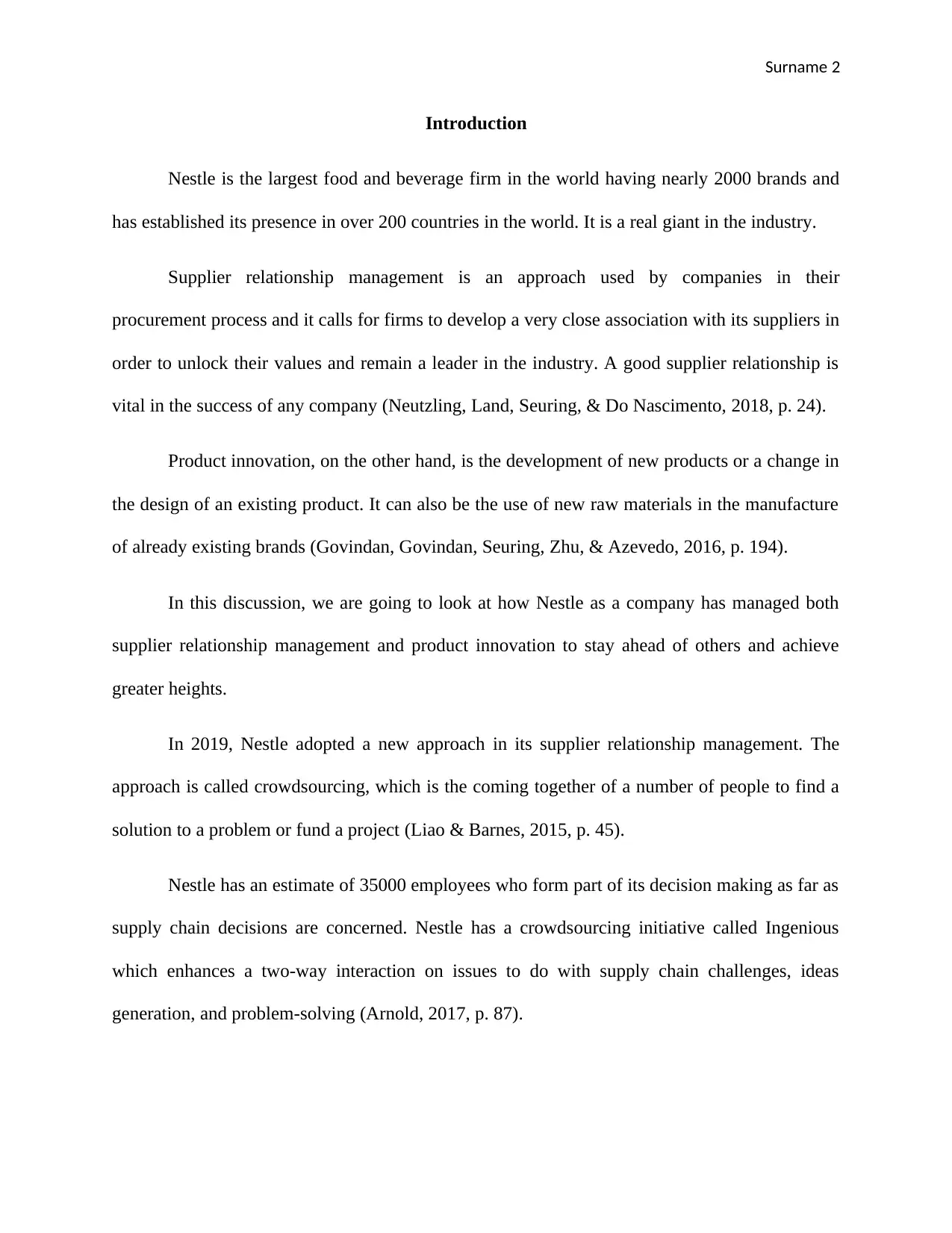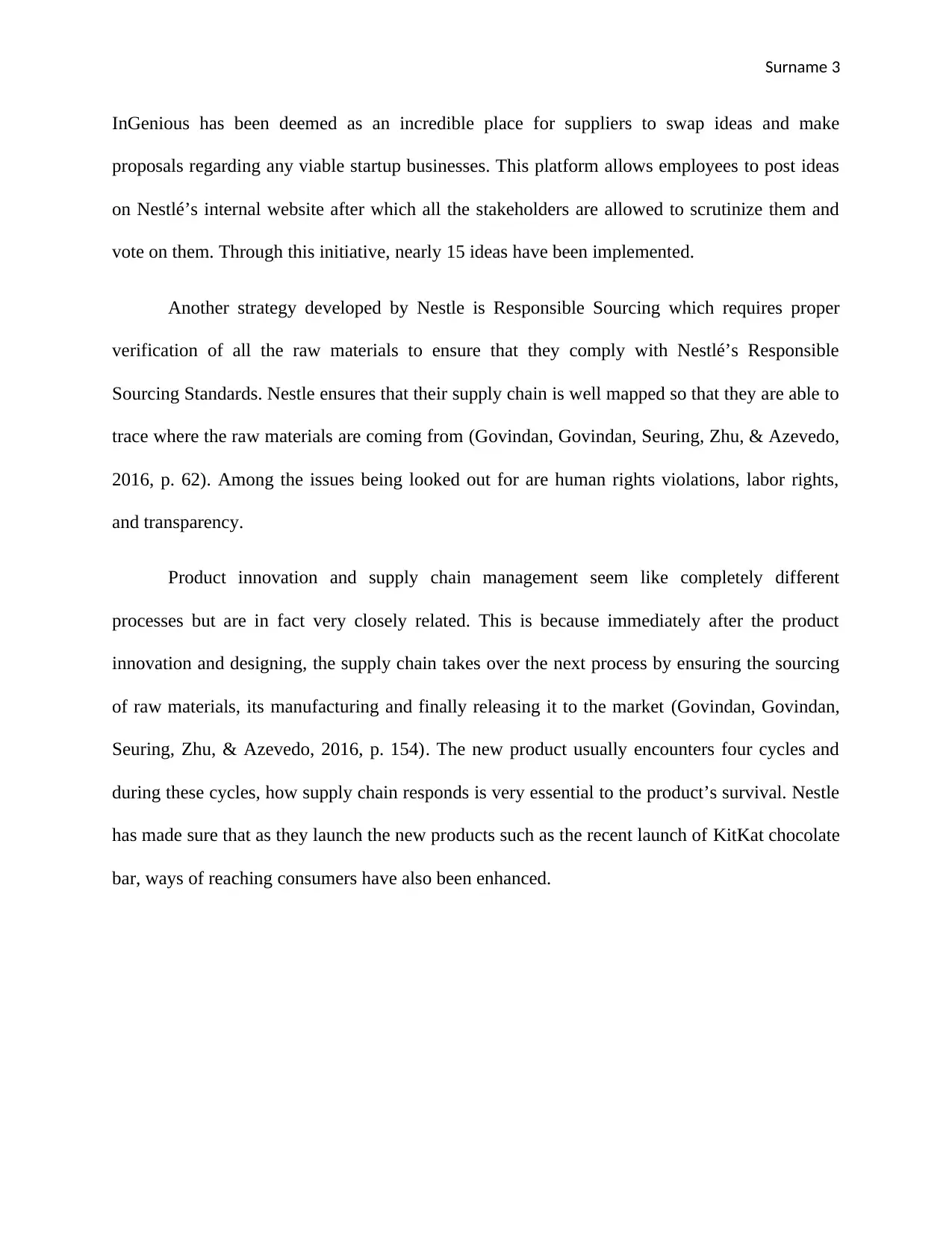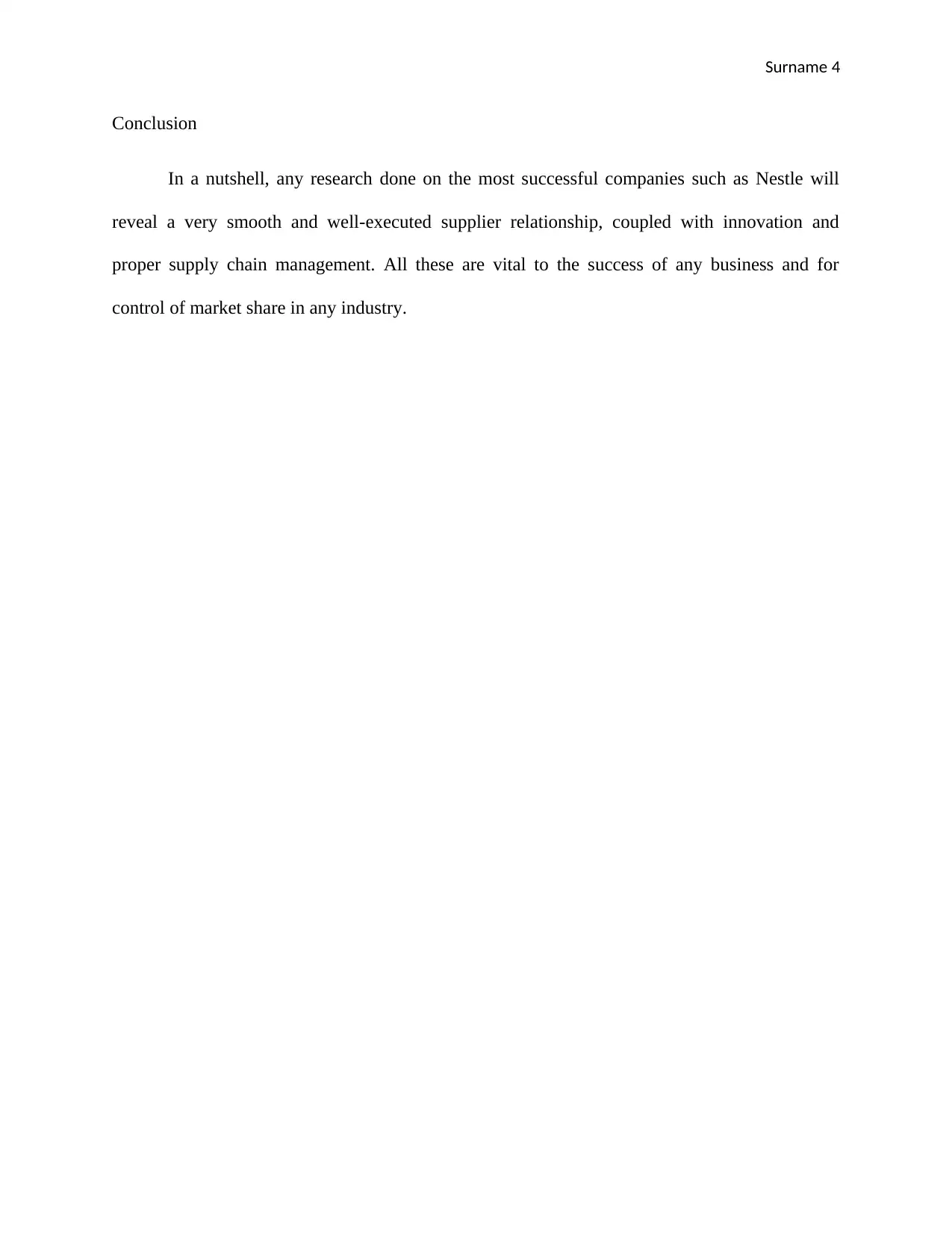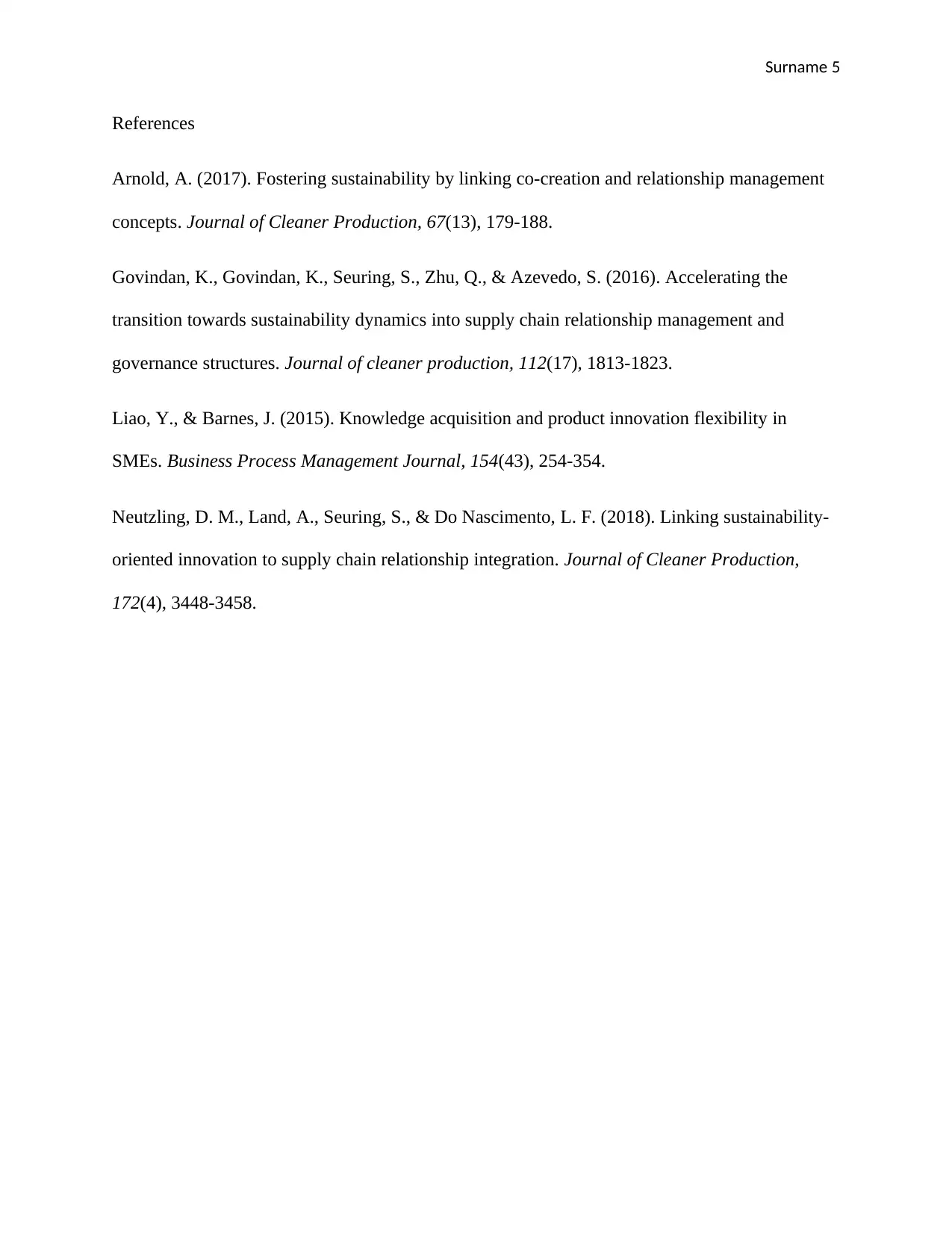Supply Chain Management and Product Innovation at Nestle Report
VerifiedAdded on 2022/09/21
|5
|819
|33
Report
AI Summary
This report examines Nestle's approach to supplier relationship management and product innovation, highlighting their strategies for maintaining market leadership. The analysis covers Nestle's use of crowdsourcing through the InGenious platform to foster employee involvement in supply chain decisions and innovation. It also details the implementation of Responsible Sourcing to ensure ethical and sustainable practices within their supply chain. The report emphasizes the close relationship between product innovation and supply chain management, illustrating how Nestle integrates these processes, particularly during product launches. By focusing on these areas, Nestle effectively manages its supply chain and continues to launch new products to meet consumer demands. The report concludes that Nestle's success is rooted in its well-executed supplier relationships, innovation, and efficient supply chain management, all of which are essential for controlling market share.
1 out of 5












![[object Object]](/_next/static/media/star-bottom.7253800d.svg)